A major reason why we stopped at Orvieto during our trip in Italy is the proximity of Orvieto township to Civita di Bagnoregio. Both labelled as Jewel of the Hill by Rick Steve and known as the Dying Town because of the decreasing population, Civita di Bagnoregio is a historical village perched on top of a standalone rock in a vast canyon with a lot of charms. It is less than 2 hours bus ride from Orvieto, and was one of the most anticipated part of the trip for us.
Civita di Bagnoregio 白露里治奧古城是一个离Orvieto奥尔维耶托非常近的古城。它是我们选择了在奥尔维耶托过夜的其中一个重要原因。白露里治奧古城是一个像天空之城一般建在一个峡谷里一个孤独的山上的古镇,因为人囗锐减而被称为垂死之城,也是著名旅游达人Rick Steve 口中的山上瑰宝。这个离奥尔维耶托只需两小时公交车程的古镇可以说是我们意大利之旅最期待的一段。

Because I do not speak Italian despite trying to learn it 6 months in advance, Rick Steve’s guide to Civita di Bagnoregio was the only thing I have. And according to Rick Steve’s guide, the bus that leaves for Civita di Bagnoregio departs at the car park in front of the cable car station on the hilltop side of Orvieto. There were only two buses per day. One leaves at 8:00 am, and the other leaves at 12:40 pm. We decided to catch the morning bus, so to avoid missing the bus, we arrived at the car park at 7:50 am and waited. And waited and waited and waited. No one turned up, and no bus turned up. At first we thought it was the bus being late. But when it went past 8:05 am, we decided to ask around. After a few tries of “Mi scusi, Parla inglese” we finally found someone who did speak English. But he wasn’t sure where the bus is, and he pointed us to a school ground and tell us to check there. So we did, and it turns out that the bus stop is, in fact, inside the school ground and not at the car park as Rick Steve said. So we missed our bus. And we had to wait 5 hours for the next. Pretty horrible start to the day, but there was nothing we could do but come back later in the day for the second bus. At least we got to see a bit more of the Orvieto Township on a misty morning.
虽然我在出发前的六个月开始尝试学习意大利语,可是我根本学不会。所以去白露里治奧古城的方法就只能靠Rick Steve 的旅游书了。旅游书里说,去白露里治奧的公交车在奥尔维耶托缆车站外的停车场乘坐,每天只有两班:一班车在早上八点,另一班在下午十二点四十分。为了赶上早上的班车,我们早早的起床吃早餐,然后赶在七点五十分就到达停车场去等车。然而,一分一秒过去了,一辆公共汽车也看不见,也没有看见等公车的人。过了八点,还是没有车,于是我只好硬着头皮,用着我的破意大利语,说着, 去找一个会说英语的人。好不容易找到一个,他却说他也不知道。不过,他指了一指旁边一家学校叫我们进去看看,里面好像有些大巴。我们赶紧往学校里跑。进去一看,果然是个公共汽车总站,而我们要坐的公车就在这里出发。最后,被旅游书耽误的我们没有赶上早上那班车。我们只好回到镇上,等待五个小时后的下午班次。不过也是因为没赶上车我们才能看到翁布里亚原野的晨雾风光,可以算是因祸得褔。

We came back at around 12:30 pm, and sure enough, a bus with a big sign saying Bagnoregio was sitting right there in the school yard. We hurried onto the bus, afraid of missing the bus again, but there was still plenty of time. As we waited on our seats, more people joined us on the bus, most of them seems to be art students. At long last, the bus engine revved, and we started our journey to this Dying Town. Along the way, we got a glimpse of the Orvieto Cathedral from the bottom of the hill, as well as the country scenery of Umbria and Lazio. Despite it being winter, green fields can still be seen, in a stark contrast to the bare grape vines in a vineyard or the grey branches of trees that had shed its leaves.
十二点半,我们回到学校里的公车站。这一次,去白露里治奧的大巴早就在这等候。我们急急的上车,对早上的事件还是心有余悸,生怕又赶不上车。不过这次我们有很多时间。我们上车后,陆续有更多的人上车,大部分都是美术学生。十二点四十分整,大巴的引擎发动了。折腾了半天,我们终于朝着垂死之城出发了。路上我们从山下看到山上的奥尔维耶托大教堂,还有沿途翁布利亚和拉齊奧的田野风光。虽然正值寒冬,但原野上还是绿草菁菁,与田边的枯枝和凋零的葡萄藤相映成趣。




The bus stopped at Bagnoregio, the modern version of Civita di Bagnoregio that was drawing the life out of the old city. But even still, the town seemed eerily quiet, with hardly anyone on the streets. We walked along on the main street that was pretty empty, staring down empty lanes with old gloomy buildings with weathered paint and wooden blinds that seem to be in need of some TLC.
公交车把我们带到白露里治奧市, 那个取替了白露里治奧古城的现代城镇。可是就算在白露里治奧市我们也没看到什么人,路上也没有在走动的车辆,非常沉寂。我们沿着空空的主街前进,狭窄的空巷子从主街往外伸延,街道两边排着日久失收的旧房子,外墙的油漆在风吹雨打下已开始剥落,而窗户上的木帘子也早已失色。






At the end of the road, we finally saw it. Standing in the middle of a big canyon is a giant, lonely rock, and on top of it with stone walls that extended out to the edge of the cliff was Civita, the old village that had stood here since the Etruscans times 2500 years ago.
我们走到街的尽头,终于看到了那山上瑰宝: 在深谷中一座大山孤独的耸立着,而白露里治奧古城这块瑰宝就在山顶上,自伊特鲁里亚文明建城以来的两千五百个寒暑,顶着风吹雨打炎夏寒冬依然屹立不倒。

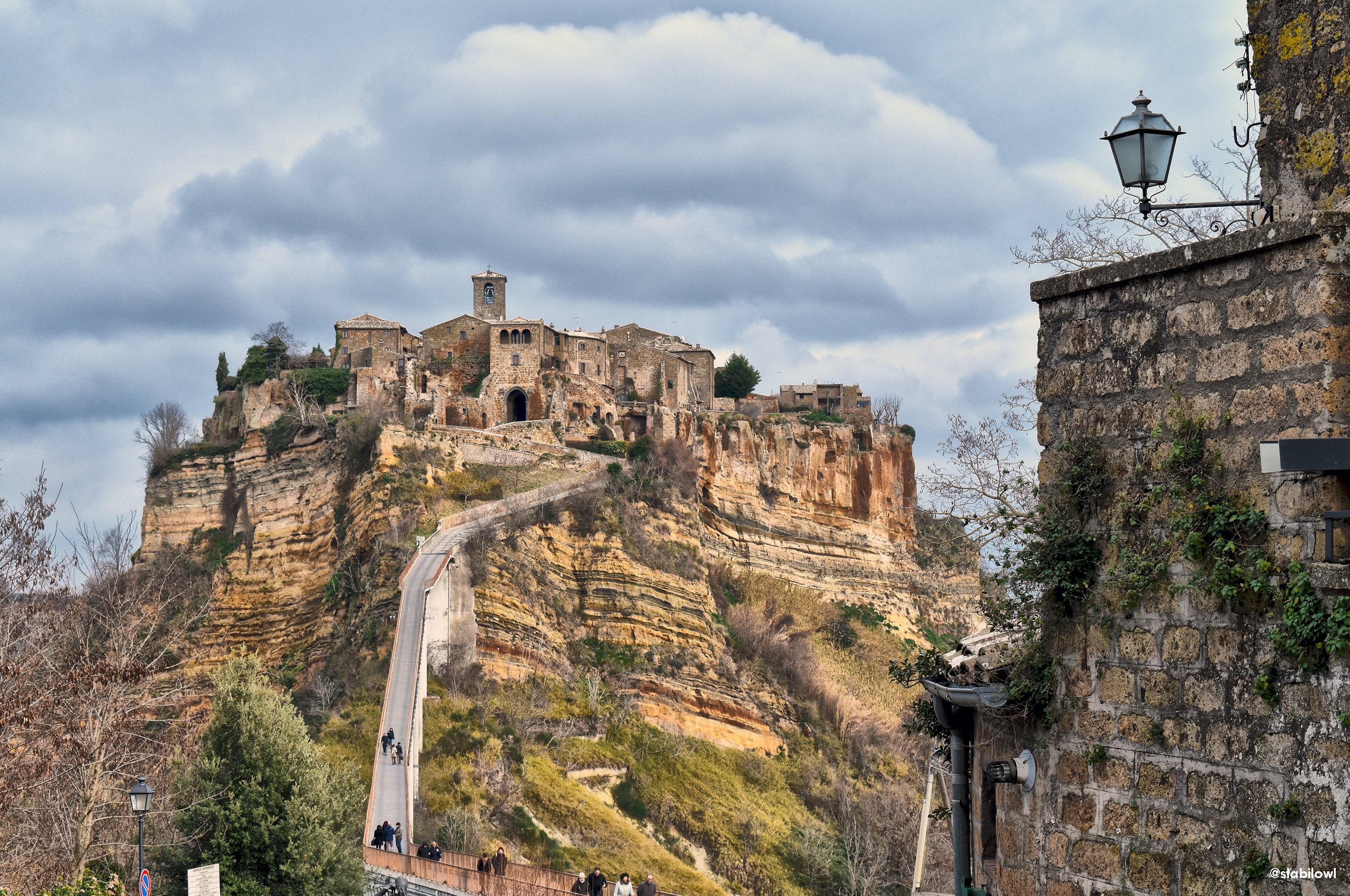
We purchased our tickets from a shop by the view point, and make our way up the bridge that connects the isolated Civita to the rest of the world. Apparently, back in Medieval times, the hill was much larger and Civita di Bagnoregio was a major centre in the region. However, earthquake and erosion slowly eroded the hill away, causing buildings to fall down the cliffs and the size of the town shrunk eventually to the current state. Civita have a permanent population of as low as 7 during winter time. But because of this isolation, all the buildings within the Civita are very well-preserved. Along the bridge it was quite windy, but we got a good view of the valley below as well as towns and houses on the other side of the valley. In no time, we were going up on the winding footpaths that hugged the cliffside, staring up the formidable stone walls that protected Civita for centuries,and eventually we passed through the city gate, which was like a door to the past, took us straight back to medieval times, into the historical center of Civita di Bagnoregio.
我们在瞭望台旁边的小店买了古城的门票,然后走上那连接着古城和外界的吊桥。在中世纪时期,白露里治奧古城和它底下的大山的面积比现在要大得多。可是地震和岩蚀让山的面积慢慢缩小,山边的建筑亦慢慢都掉下悬崖,导致古城面积变小,城里居民也都移居去比较现代的新城。在冬天,古城的非流动人口最低只有七人!也是因为古城如此荒凉,城里的中世纪建筑才能得以保留。在桥上风非常大,可是可以清楚地看到山谷底下和对面山上小村的风光。我们很快就抵达古城的城墙下。我们跎着山边弯弯曲曲的小径,一边仰望着威严的古墙,一边沿山而上,不久便通过了城门。我们仿佛穿越了时光门,回到了中世纪的古城中心。

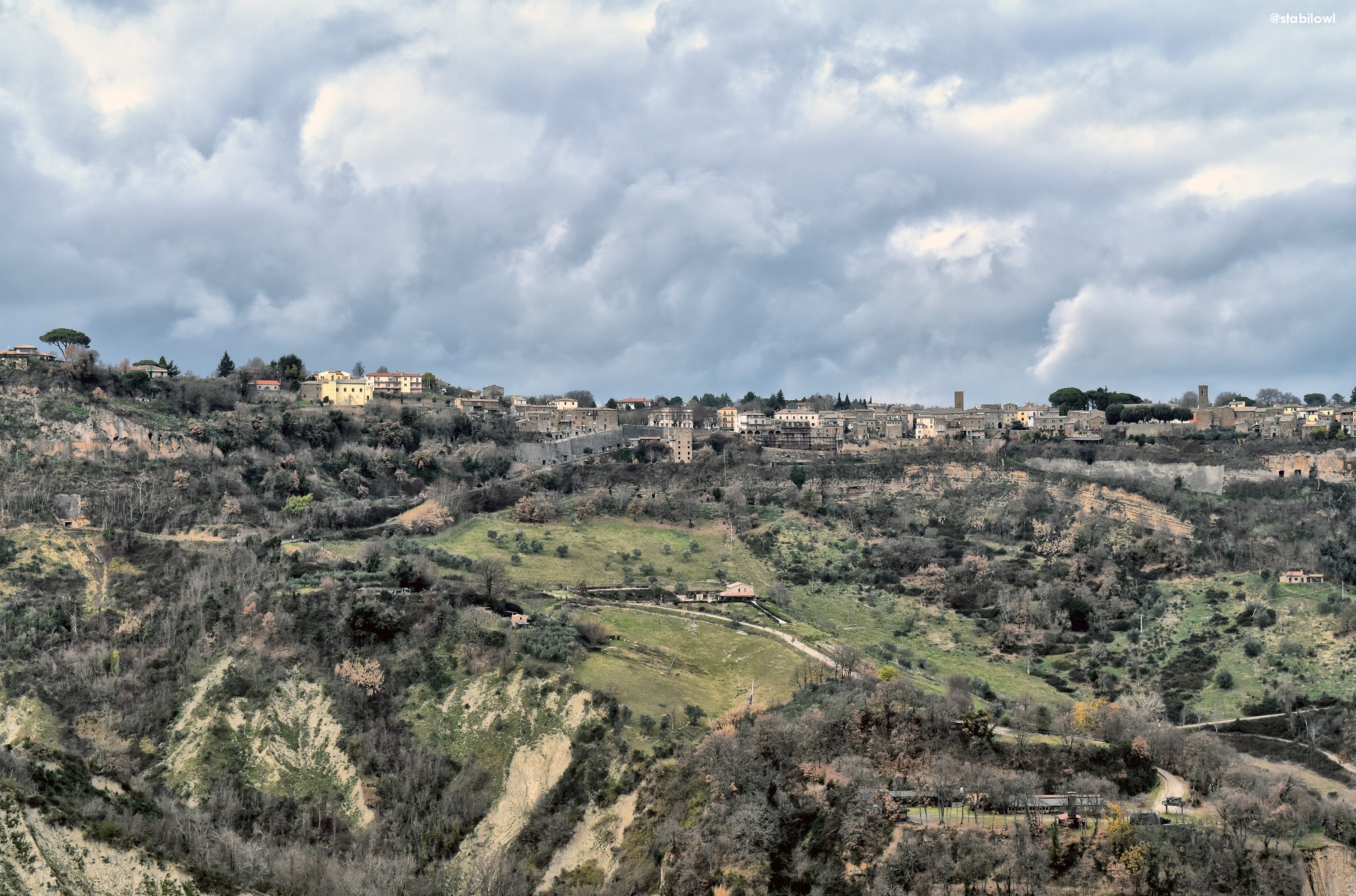

The first thing we did though, was went for lunch, as it was way past lunch time and we were pretty hungry. There is a number of restaurants in Civita, but the one that was recommended by Rick Steve and trip advisor is Trattoria Antico Forno. It is quite a humble establishment, with a traditional setting completed with a fireplace. It has an extensive menu, but ordered two very simple dishes: a spaghetti and a penne (I don’t remember which kind). Both were very delicious. We also ordered two small jugs of table wine, one red and one white, which comes to our table in a small glass flask and plastic tumblers. The grapes in the local area, while not as famous as its Tuscany counterparts, can still make good wine, and even cheap table wines like the ones that we ordered tasted really good.
中世纪建筑的诱惑,比不上我们的饿肠辘辘,所以进城的第一件事就是去吃午饭。古城里有好几家餐馆,其中的Antico Forno 是 Rick Steve 和Trip Advisor 都推荐的小餐馆。是一家让人感觉朴实和温暖的小餐馆,十分传统的布置,还有一个柴火壁炉。我们叫了一个意大利面,一个通心意面。非常简单但十分可口。我们还叫了一份红酒一份白酒。酒是用玻璃壶盛出,用塑料杯饮用。附近的葡萄也许没有托斯卡纳的有名,可是品种十分不错,就算最便宜的餐酒也很好喝。




After lunch. We went around and explore the old town. Because of its isolation to the rest of the world, the buildings that are still standing are pretty well preserved, and the whole place is so picturesque with all the Italian small town charm: old brick houses with balconies filled with pot flowers; large squares surrounded by old clock tower and churches; empty lanes with narrow staircases, parked scooters and vine covered stone walls. All that you would expect from a Italian small village.
午饭后,我们到处闲逛,欣赏着古城的风光。城里的建筑古色古香,中世纪的风格保留得非常完整。阳台上放满盆花的老旧砖房、被古老钟楼和教堂环绕的旧广场、小巷里狭窄的石阶、停在路边的电瓶车,还有爬满藤蔓的石墙—整个古城都渗透着意大利小镇应有的风味。
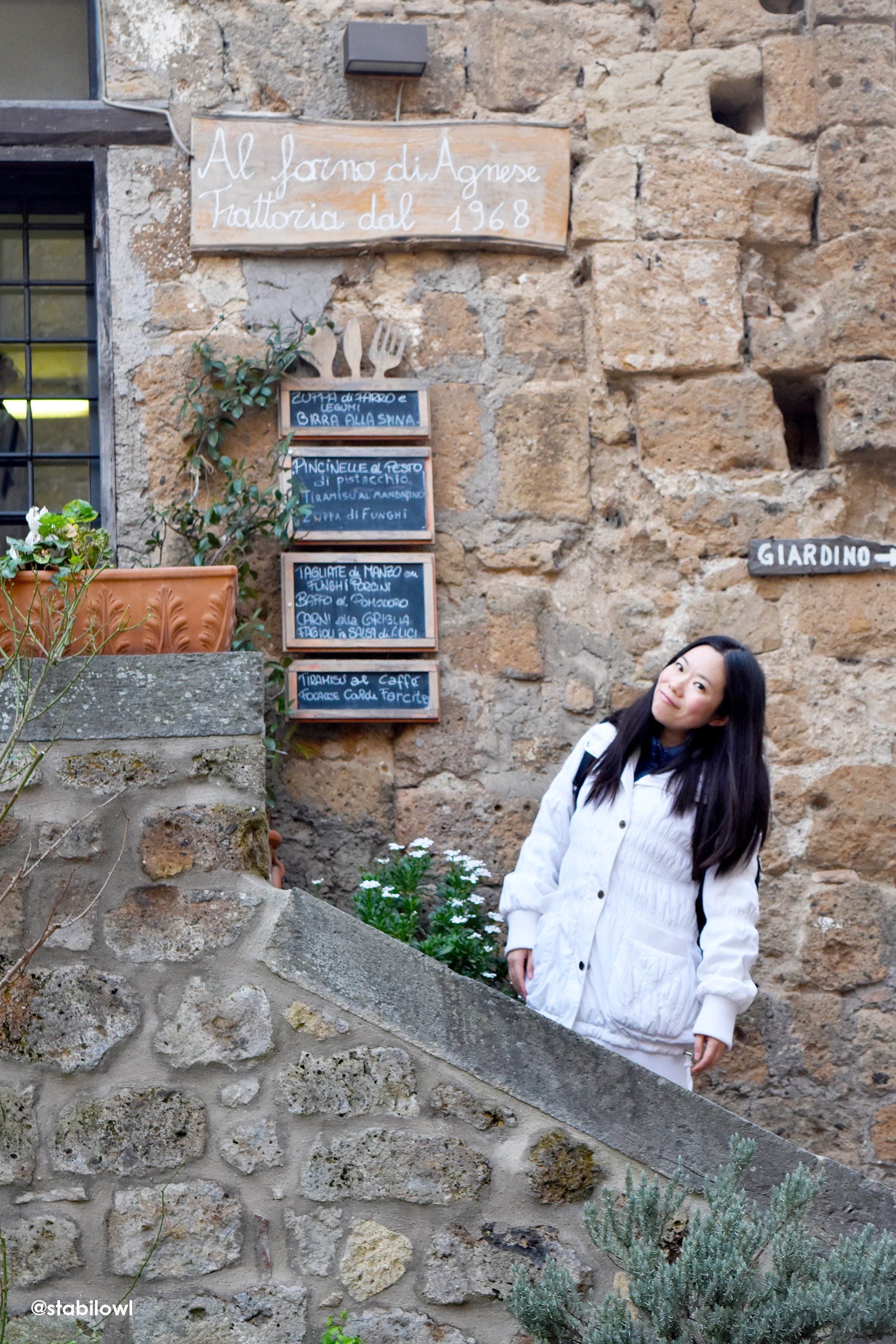

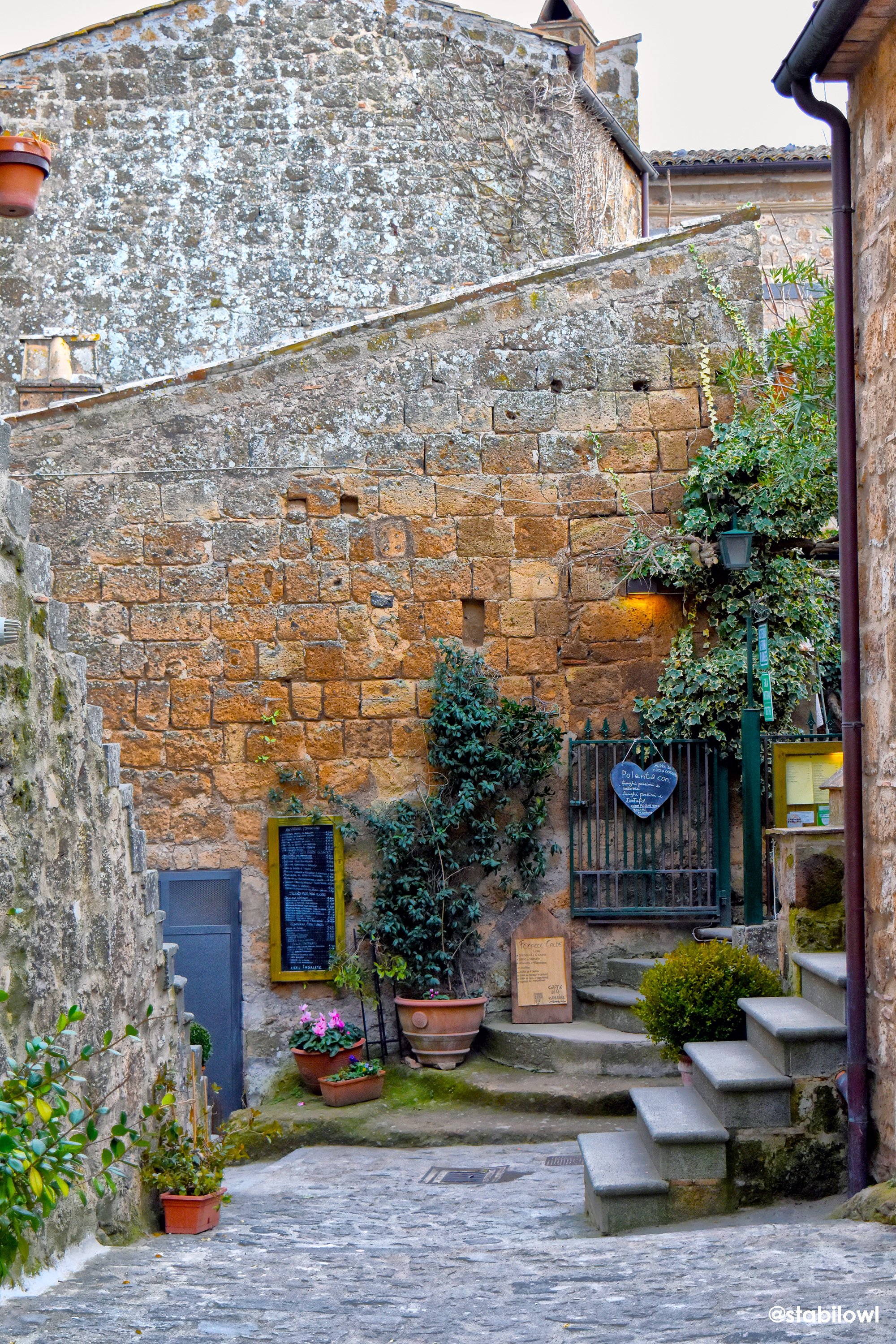


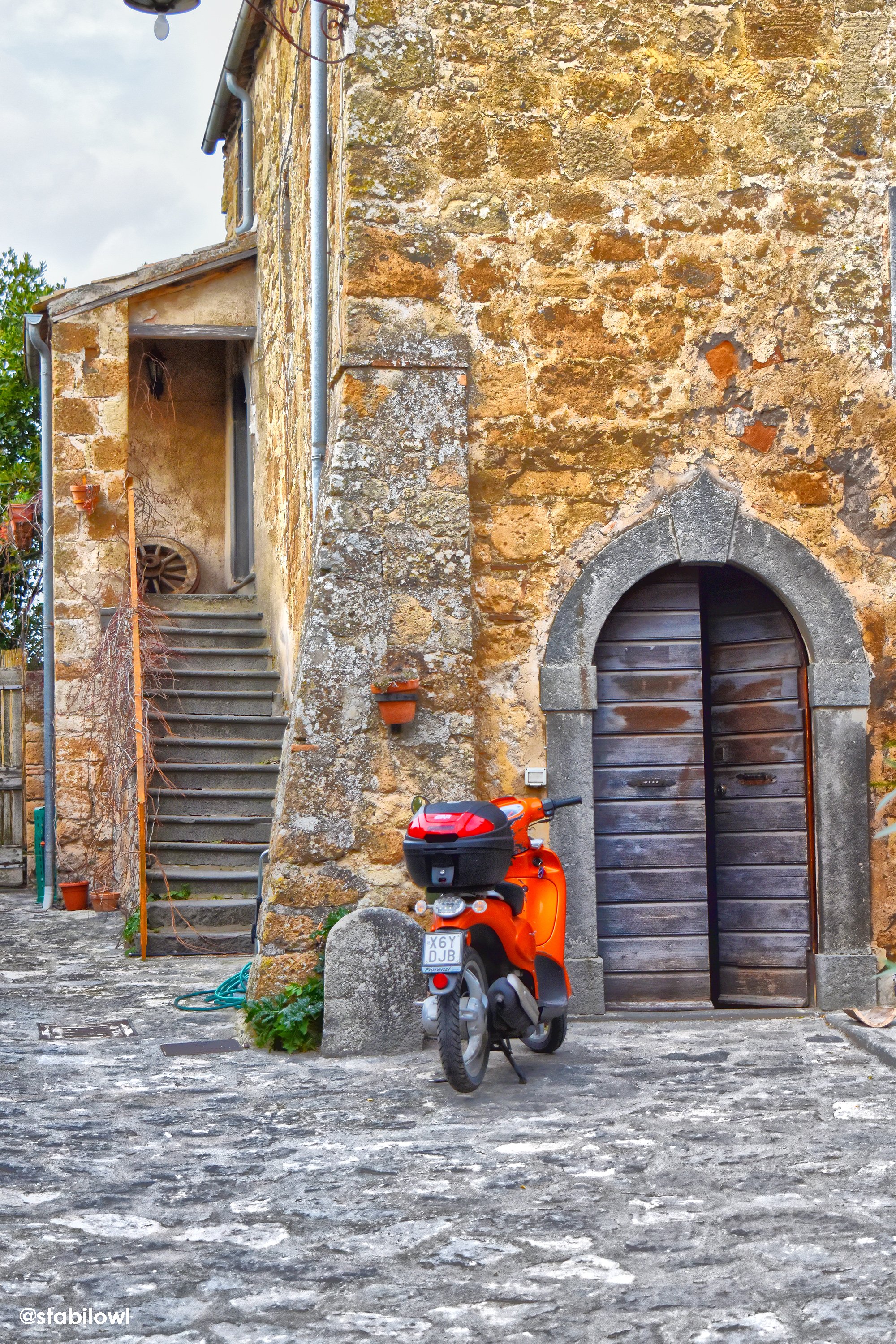
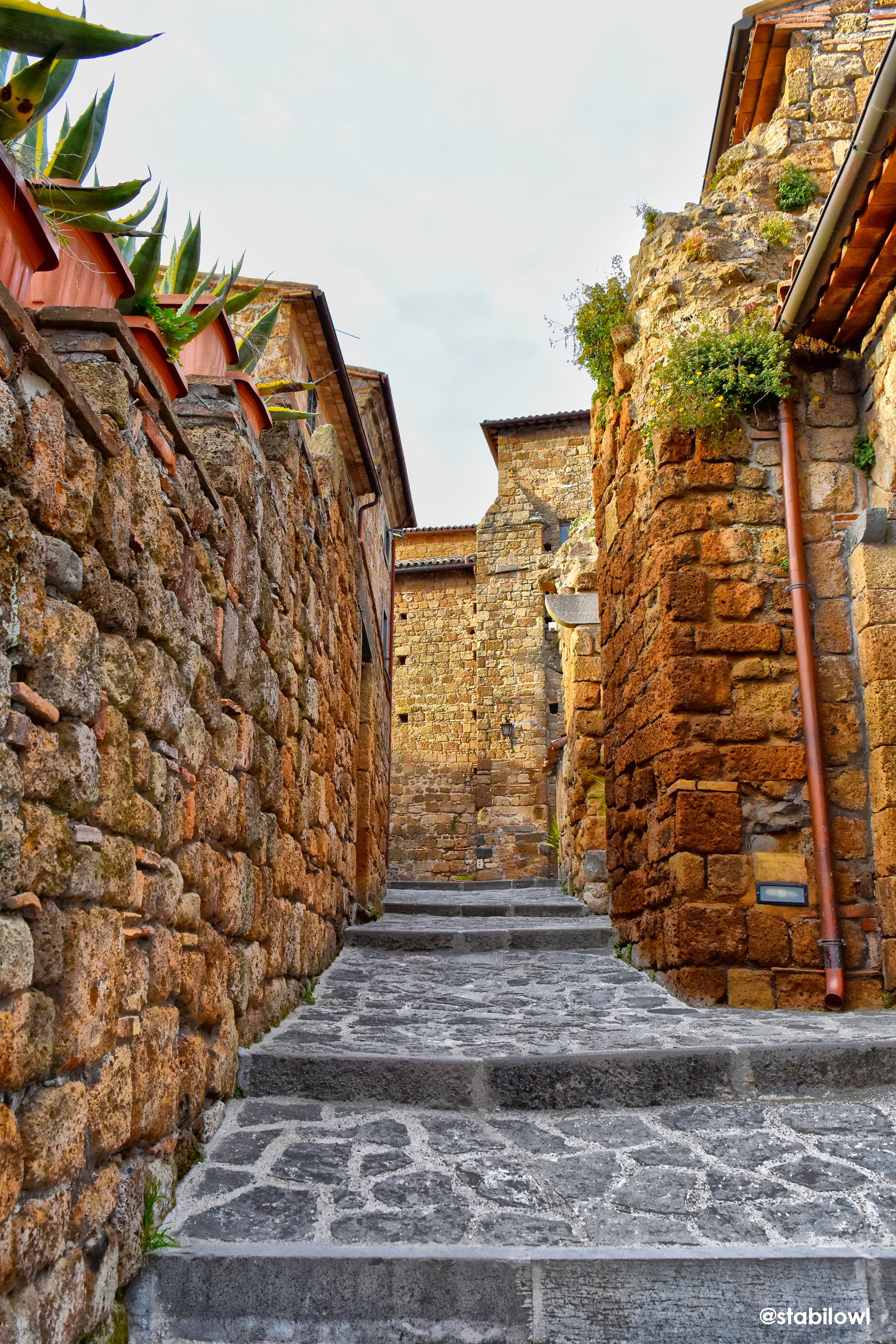



Towards the edge of the town, the buildings looked more run down and building ruins where only a few walls are left standing is a common site. From the edge of the town you can see the beautiful valley. There was a small run down restaurant by the edge of the cliff, which was either closed permanently or just not open yet. It was a great backdrop for photos though so we spent some time here playing around and taking portraits shots.
越靠近古城的周边,街上的建筑越破旧,破瓦颓垣的废墟到处可见。在古城边上可以眺望山谷的风景。悬崖旁有家像是已经倒闭的破旧餐厅,很有味道。我们在这玩了好一会摆拍呢。


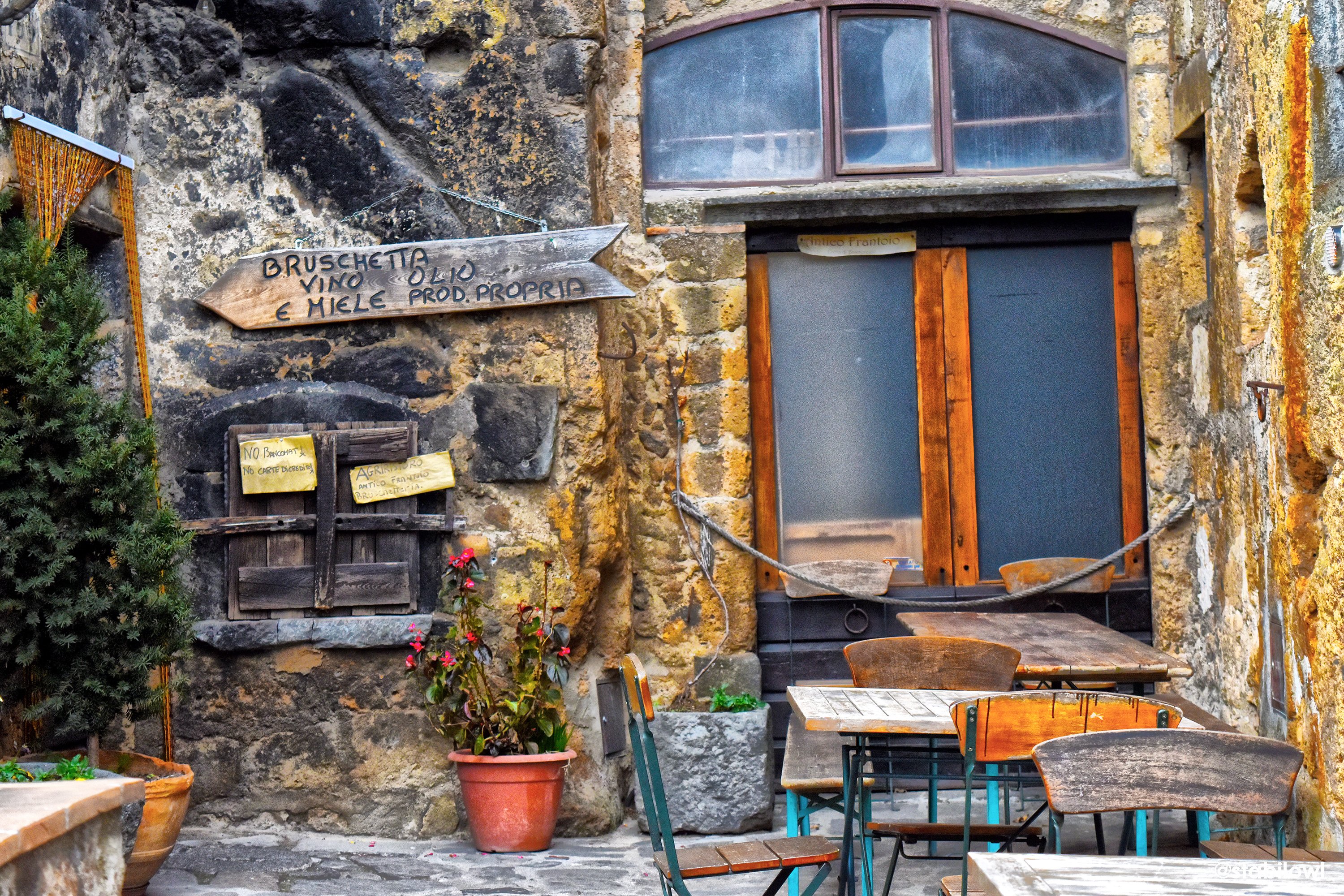

One other thing about the Civita is the abundance of cats. Italians seems to be quite fond of cats, the in Civita especially, cats can be seen everywhere. Sitting on balconies of old houses, scaling the stone walls on the cliff side, or just sitting on the cobblestone street basking in the sun. These are friendly cats too! Not afraid of people at all. When we were on our way back to the bus stop, we saw someone with a bucket of feed for stray cats. As a result, about 15 – 20 cats gathered around the path way, scrambling for something to eat. The scene was pretty hilarious.
除了中世纪建筑,满城的猫也是古城的特色之一。听说意大利人很喜欢猫,而白露里治奧古城好像证实了这一点。古城里的每个角落都可以看到猫咪。有些在窗台上睡懒觉,有些在山边爬城墙,还有些在鹅卵石路上晒太阳,等着游客来摸。我们回去公车站的路上,还看到有人拿着一个大桶喂流浪猫。差不多有二十只猫一涌而上去抢食物,十分好玩。





Soon, the sun was setting and we hurried back to the bus stop to catch the last bus back to Orvieto. It had been amazing to be able to spend time in this amazing place and admire at the medieval buildings and imaged their way of life. It had been an adventure too just to get there, and that is always part of the fun! Writing about this trip is really stirring up my travel bug again. Hope I could visit Italy again soon!
太阳要下山了,我们匆匆赶回公车站,乘上最后一班车回到奥尔维耶托. 真庆幸能够在一个中世纪古城里游荡,欣赏着古建筑,幻想着中世纪的世界。而沿途的波折也为这次的旅途增添了乐趣。这次旅行真的让我回味无穷,以后有机会一定会再回去意大利,这个漂亮的国度!
Posted from my blog with SteemPress : http://stabilowl.vornix.blog/2018/07/11/travelling-with-stabilo-24-civita-di-bagnoregio-the-jewel-of-the-hill-%e7%bb%8f%e7%ba%ac%e6%b8%b8%e8%b8%aa-24-%e5%a4%a9%e7%a9%ba%e4%b9%8b%e5%9f%8e%e7%99%bd%e9%9c%b2%e9%87%8c%e6%b2%bb%e5%a5%a7/
